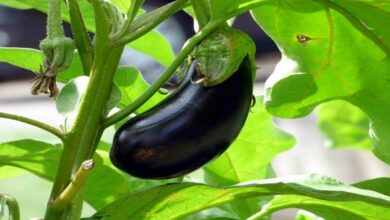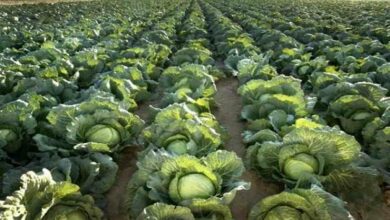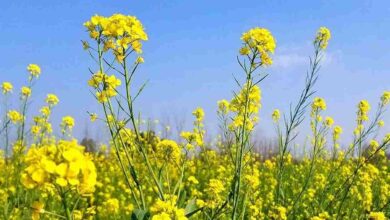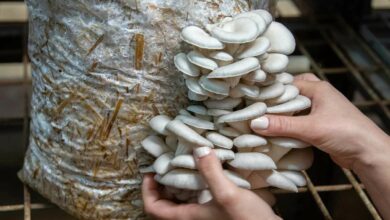Adopt this method to cultivate water chestnut; there will be good yield
Cultivation of Water Chestnut: In Bihar, singhada and makhana are widely grown because of the abundance of ponds in some areas, such as Darbhanga and Madhubani. One of India’s most significant aquatic fruit crops is the singada, often known as the water chestnut (Trapa natan) in English. In tropical and subtropical areas, this aquatic nut crop is mostly cultivated in water. It grows readily in lakes, ponds, and any other area with two to three feet of water. To do this, nutrient-rich water with a pH of neutral to slightly alkaline is needed. Even when confined to mud banks, the plant flourishes because it is well suited to living on the water’s edge.
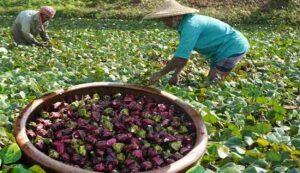
How to Use
It is widely utilized as an edible nut in India. Walnut kernels are high in protein (20%), carbohydrate (52%), tannins (9.4%), fat (1%), sugar (3%), minerals, and other nutrients. Along with fiber and vitamin B, it is also an excellent source of calcium, potassium, iron, and zinc. In addition to these, it has several complimentary and healing qualities. As a result, they are often referred to as cooling foods and are a great way to combat summer heat. Additionally, a cough remedy is made by mixing water with chestnut powder. Drinking a cup of sweet water soup might be quite helpful if you have discomfort while urinating. Chestnut flour, both dry and wet, has cleansing qualities and is also used to treat jaundice in a beautiful way. Since water chestnut flour is a rich source of energy, it is used to produce rotis. However, it is important to keep in mind that it lacks preventive antioxidants. Due to their laxative and very chilly nature, they should not be taken in excessive amounts as they may result in bloating and stomach gas.
Variety
To yet, no standard water chestnut cultivar has been created. However, nuts with a variety of husk colors—such as green, red, or purple—as well as a blend of red and green are identifiable. Growers in West Bengal and other eastern India refer to several varieties of water chestnut by names like Kanpuri, Jaunpuri, Desi Large, Desi Small, and so on.
The Important Role of Soil
Given that it is an aquatic plant, soil is not as crucial to its cultivation. However, it has been shown that water chestnuts produce more when the soil in water reservoirs is rich, friable, and well fed or manured.
Management of Nutrients
For improved growth and development, water chestnuts need certain nutrients. For a greater output, fertilization with a modest quantity of chicken dung is crucial. However, it calls for little potassium and phosphorus administration. The pH range of 6 to 7.5 is ideal for its growth. One of the most crucial steps in nutrient management is adjusting pH, which is accomplished by growers all over the globe using dolomite, a kind of lime that contains magnesium. About a month after transplanting, and then 20 days later, it is advised to apply 30–40 kg of urea per hectare of land to the pond in West Bengal.
Transplanting Technique
Initially, the plants should be cultivated in low-nutrient nursery plots, and when the stems are about 300 mm tall, they should be moved. As a result, the ponds’ development cycle is shortened by six weeks. If the tops are excessively long during transplanting, they may be cut. When transplanting seedlings, it’s important to keep them wet. The creepers are then treated for 15 minutes in a solution of imidacloprid at a rate of 1 milliliter per liter of water prior to transplantation. With the aid of the thumb, the treated vine is wrapped into a bundle of two to three one-meter-long vines and buried in the ground one meter apart. From the first week of July until August 15th, transplants may be performed. It is important to periodically manage weeds in both the pre- and main crops. To lessen the infestation of pests and illnesses, keep a close eye out for them and remove and destroy any afflicted leaves as soon as possible. Use the right medication if required.
Sarote or a water chestnut peeling machine is used to peel well-dried water chestnut fruits. It is then packaged in thick polythene bags and let to dry in the sun for one to two days.
Preparing Water Chestnut Fruit Kernels
Water chestnut kernels are made by drying completely mature fruits. The fruits have to be dried in polythene or a concrete barn. In order to allow the fruits to dry fully, they are flipped upside down every two to four days for around fifteen days. Instead of growing thornless chestnuts, choose thornless types, which yield larger chunks and are more productive. Additionally, harvesting it in the fields is simple.


